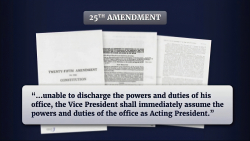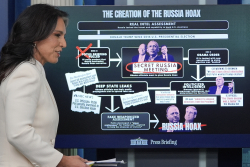Sanctions targeting oil are often ineffective at changing governmental policy and often impose additional costs on companies and consumers.
Amid the current media firestorm around L’Affaire Epstein, few people other than Chevron shareholders noticed the headline last Friday about the Trump administration loosening sanctions on Venezuela a bit to allow the company to resume some operations in the country.
But the decline in earnings at America’s second-largest oil company is only one of the plethora of negative economic externalities absorbed by the countries imposing sanctions that target the production and sale of oil. Since the 1990s, oil sanctions have become the key “go-to” policy tool Washington policymakers reach for first in trying to modify the behavior of producer countries that are problematic to us.
Some of the predictions that critics have cited, such as undermining the reserve currency status of the US dollar, have failed to materialize. But the overall track record of oil sanctions is extremely mediocre. They seldomly are decisive in targeting countries’ decisions and then only work when coupled with a serious negotiating strategy that leads to lifting them.
The near-term change, if the reporting by Reuters pans out, is that several foreign partners of Venezuela’s state-owned PDVSA oil company — most importantly Chevron — will be granted licenses that will allow them to resume work in Venezuela under limitations. These would include Chevron being paid in oil so that no cash is flowing between the United States and Venezuela.
The renewal of these licenses comes only a few months after the incoming Trump administration had rescinded them in a change from Biden-era policy. The State Department said in an official statement that the United States would not allow the Maduro government to benefit from the renewed activity by their foreign partners, but as other sources have pointed out, it is not at all clear logically how this could be the case despite the lack of cash payments. Maduro himself, on Thursday, praised the work done to keep Chevron active in Venezuela.
The move on licenses by Chevron and others came after a prisoner swap in which Venezuela returned ten American detainees in return for over 200 Venezuelans detained in El Salvador.
Arguably, the oil sanctions shift could have played a role in those negotiations. But the sectoral sanctions targeting oil were enacted in 2019, during the first Trump administration, following other sanctions dating all the way back to 2005, which were said to be due to political repression and the lack of free and fair elections.
Have the sanctions made a difference in changing the undemocratic behavior they were targeted at? Absolutely not. There is no sign of the Maduro regime being fundamentally undermined or a shift toward genuinely free elections. But here we are, with the American sanctions regime on Venezuela about to enter its third decade.
Other cases also do not show stellar results. Russia has definitely lost significant revenue from oil sanctions and the price cap since it invaded Ukraine in 2022. Even the “ghost fleet” it built as a workaround has become less effective as the West has found ways to tighten its grip on shipping. But measures that the Western powers hoped could put Russia under unbearable pressure have not yet undermined President Vladimir Putin’s ability to keep up the fight, with Russian troops making gradual advances in Ukraine this year.
The secondary sanctions the United States reimposed when President Donald Trump decided to depart from the Joint Comprehensive Plan of Action (JCPOA) in 2018 also have imposed costs, but Iran is currently selling more than half as much oil as it was prior to those sanctions resuming, and the revenue losses have not undermined the clerical regime’s hold on power.
While we cannot know what the future holds, thus far, the sanctions have not produced the desired goal of getting Iran to sign on to a deal giving up uranium enrichment. What arguably worked better was the period from 2012 to 2015, when the Obama administration coupled secondary sanctions on oil sales with a less ambitious negotiating strategy, conceding that Iran could retain enrichment under strict limits and with transparency. That strategy led to the JCPOA.
Apart from the negative externalities impacting companies like Chevron and its shareholders, sanctions also have produced distortions by physically redirecting crude and products from their economically rational markets to those willing to buy distressed crude at a discount and make payments in something other than US dollars — most notably China and India.
Some of the petroleum products produced from those crude flows in recent years have ended up flowing back, such as Indian diesel produced from Russian crude returning to Europe. The EU has announced a further sanctions package to ban these indirect imports of Russian oil beginning in January 2026, along with some produced in Turkey, which will compose about fifteen percent of current European diesel imports. That already is causing a regional spike in diesel prices in Europe, where the need for diesel imports has grown, given the relatively lighter product yield slate when refineries run lighter grades of crude. Much of what is replacing Russian volumes in European refineries is light sweet crude exported from the US shale patch.
About the Author: Greg Priddy
Greg Priddy is a Senior Fellow for the Middle East at the Center for the National Interest. He also consults for corporate and financial clients on political risk in the region and global energy markets. From 2006 to 2018, Mr. Priddy was Director, Global Oil, at Eurasia Group. His work there focused on forward-looking analysis of how political risk, sanctions, and public policy variables impact energy markets and the global industry, with a heavy emphasis on the Persian Gulf region. Prior to that, from 1999 to 2006, Mr. Priddy worked as a contractor for the US Energy Information Administration (EIA) at the US Department of Energy. Mr. Priddy’s writing has been published in The New York Times, The National Interest, Barron’s, and the Nikkei Asian Review, among others.















